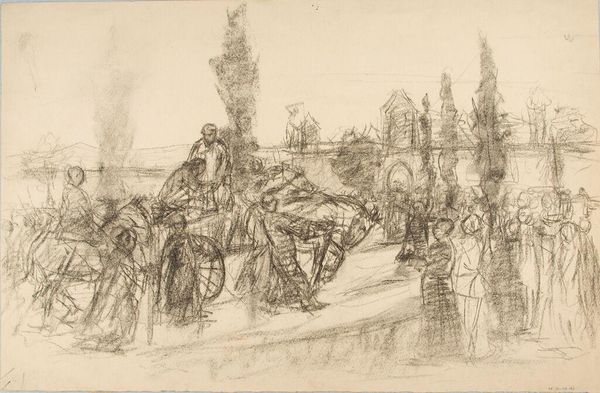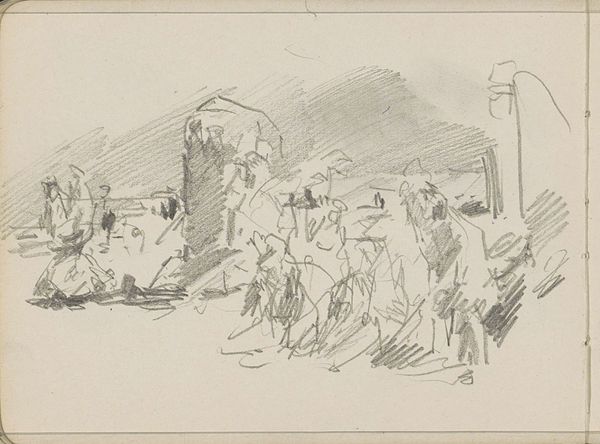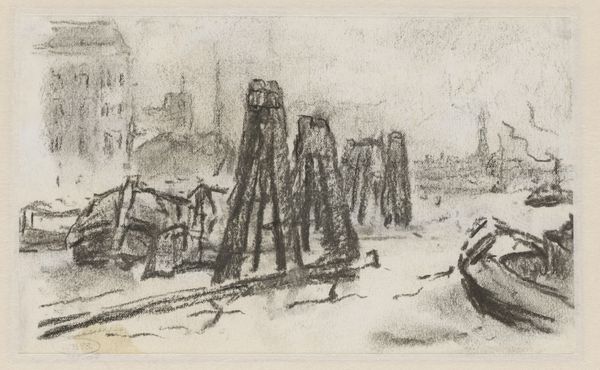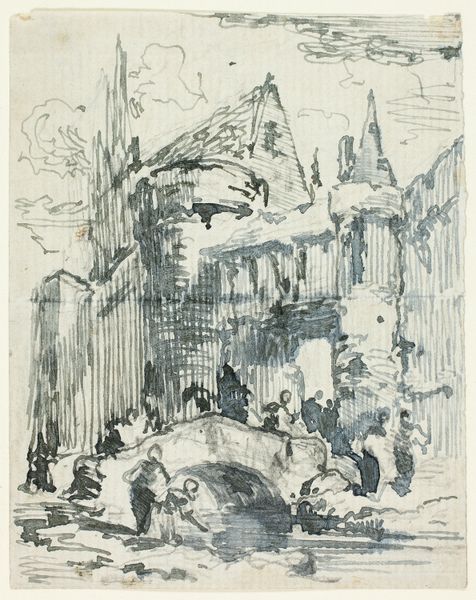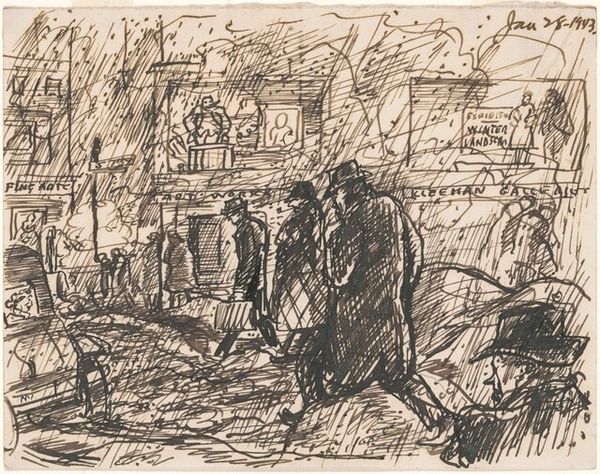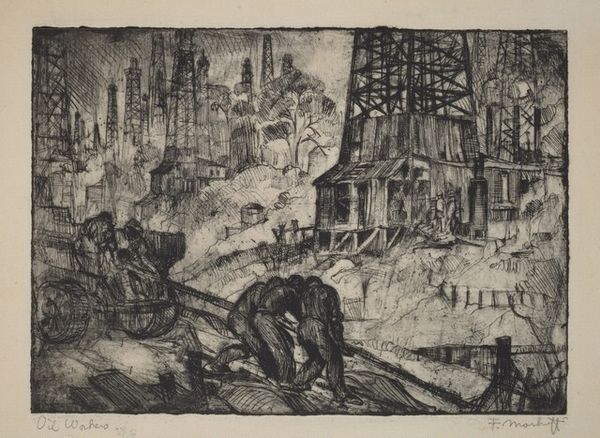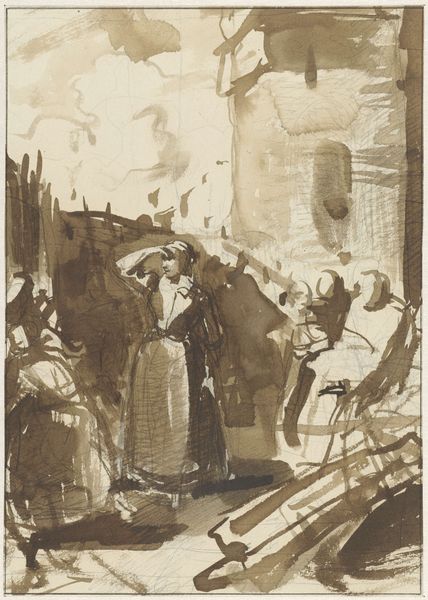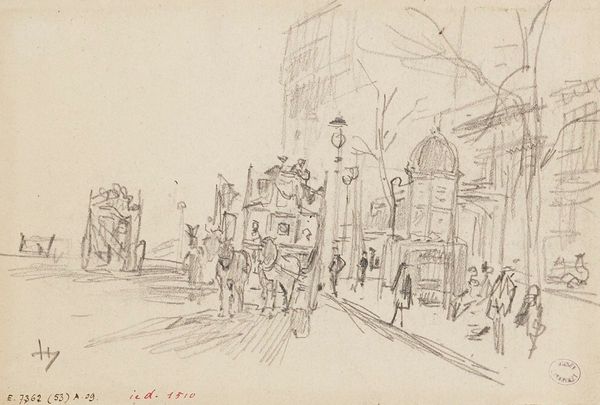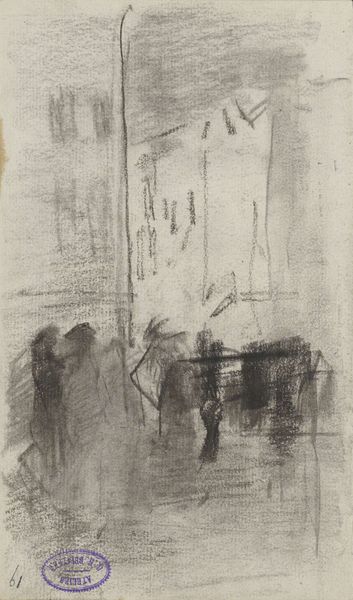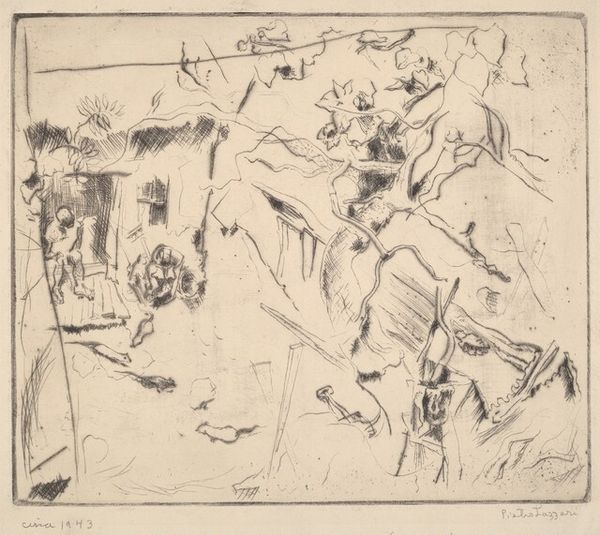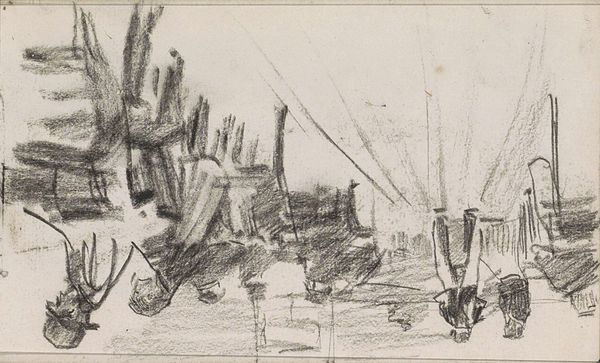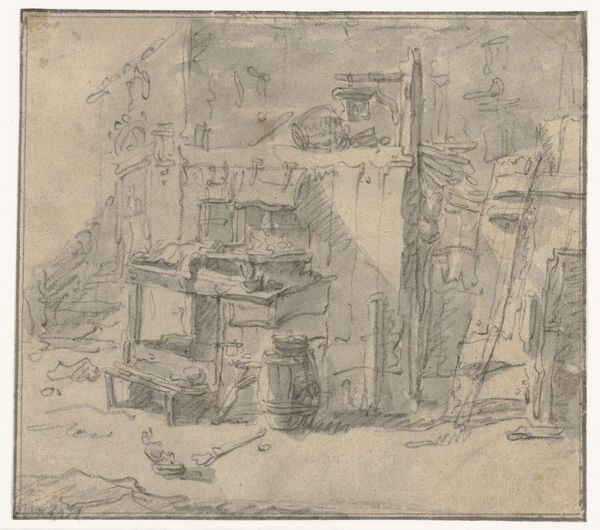
Copyright: Rijks Museum: Open Domain
Curator: We're standing before Isaac Israels' "Figuren in een etablissement," a graphite drawing on paper, created sometime between 1875 and 1934. Editor: There’s something both intriguing and unsettling about it, a real sense of being an observer. The rapid lines and shading capture a bustling, yet still somber scene. Curator: Absolutely. Israels, who was a prominent figure in the Dutch Impressionist movement, excels here in evoking the spirit of the turn-of-the-century city, of a society both striving and struggling, captured as a 'genre-painting' through the perspective of 'cityscape.' It has an almost journalistic quality to it. Editor: I’m drawn to the almost aggressive marks made with the graphite. Israels seems less interested in capturing a precise likeness and more focused on the sheer process of applying the medium to the page. Did Israels create this as preparation for something else, or might this be the final object? Curator: It speaks to the shifting societal landscape of the late 19th and early 20th centuries, especially the democratization of imagery. With industrial printing flourishing, artists began questioning traditional notions of "high art" in relation to craft and the ready availability of reproduced images. Editor: It really speaks to that transitional moment. The choice of graphite, the seeming immediacy, emphasizes the drawing's status as a record. You can imagine Israels sketching rapidly, a visual chronicler capturing these fleeting figures at the edge of visibility. What a moment for these subjects captured within the rise of new material conditions, such as rapid and reproductive images. Curator: Think of the figure wearing the high hat. His inclusion symbolizes this world's class consciousness but also feels symbolic, doesn’t it? A representation of wealth or maybe even privilege observing all that unfolds. He seems burdened by something… Editor: Right, there’s a weighty mood. What are your final thoughts here? Curator: For me, this work really distills a moment in time—of industrial and societal transitions—and makes us consider our relationship to social standing. Editor: It's a powerful piece, particularly in revealing the process of capturing an instant as its made from raw materials.
Comments
No comments
Be the first to comment and join the conversation on the ultimate creative platform.
